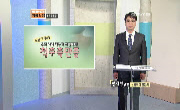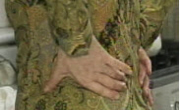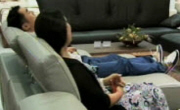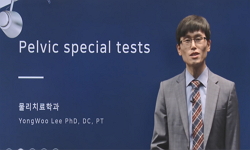This study has drawn the following conclusion by analyzing the frequency of 85 students of JJ Industrial University, for 64 persons in the right and 21 persons in the left, while for 69 males and 16 females. Assuming that there will be a difference ...
http://chineseinput.net/에서 pinyin(병음)방식으로 중국어를 변환할 수 있습니다.
변환된 중국어를 복사하여 사용하시면 됩니다.
- 中文 을 입력하시려면 zhongwen을 입력하시고 space를누르시면됩니다.
- 北京 을 입력하시려면 beijing을 입력하시고 space를 누르시면 됩니다.
대학생들의 기능적 하지 길이 차이 비교 : 진주산업대학교 학생들 대상으로 = Comparison of functional legs length in University Students : Object of Jinju National University Students
한글로보기부가정보
다국어 초록 (Multilingual Abstract)
Assuming that there will be a difference in the length of functional legs, this study has concluded as follows:
1) It was concluded that there is great difference in the length of functional lower parts(legs) for the group of Students. The differences range from 0.5cm to 2.5cm, among which 0.50cm is the most common , and all of them showed the differences in the length of legs.
2) It was concluded that there were more people with longer right leg than the ones with longer left leg.
It was conlcuded that the people with longer right leg had longer functional lower parts(legs). However, it is considered that the difference with 2cm or more would have stturctural defects, which was shown to be lower in the efficient percentage of the left leg.
3) It was shown that there was no difference between males and females in the length of functional legs.
Among 69 males and 16 females, it was shown that the males of right leg were 52, the females of right leg 12, the males of left leg 17, and the females of left leg 4 similarly, from which it was concluded that there was no difference.
Among 85 persons, 64 persons have longer right leg and 21 persons longer left leg, while the percentage of the males with longer right leg was 81.2% of 69 males and the one of the females with longer right leg man higher 18.8. It was further concluded that the persons with 0.50cm longer right leg occupied 41.6% and the ones with 0.50cm longer left leg 47.6%.
As man walks upright, the lower parts(legs) playing a role of a lever supporting the pelvis. As the collpased center of the legs will affect the pelvis and vertebrae, more researches should be carried out on the correction of pelvis and vertebrae in the future for right posture.
This study has drawn the following conclusion by analyzing the frequency of 85 students of JJ Industrial University, for 64 persons in the right and 21 persons in the left, while for 69 males and 16 females.
Assuming that there will be a difference in the length of functional legs, this study has concluded as follows:
1) It was concluded that there is great difference in the length of functional lower parts(legs) for the group of Students. The differences range from 0.5cm to 2.5cm, among which 0.50cm is the most common , and all of them showed the differences in the length of legs.
2) It was concluded that there were more people with longer right leg than the ones with longer left leg.
It was conlcuded that the people with longer right leg had longer functional lower parts(legs). However, it is considered that the difference with 2cm or more would have stturctural defects, which was shown to be lower in the efficient percentage of the left leg.
3) It was shown that there was no difference between males and females in the length of functional legs.
Among 69 males and 16 females, it was shown that the males of right leg were 52, the females of right leg 12, the males of left leg 17, and the females of left leg 4 similarly, from which it was concluded that there was no difference.
Among 85 persons, 64 persons have longer right leg and 21 persons longer left leg, while the percentage of the males with longer right leg was 81.2% of 69 males and the one of the females with longer right leg man higher 18.8. It was further concluded that the persons with 0.50cm longer right leg occupied 41.6% and the ones with 0.50cm longer left leg 47.6%.
As man walks upright, the lower parts(legs) playing a role of a lever supporting the pelvis. As the collpased center of the legs will affect the pelvis and vertebrae, more researches should be carried out on the correction of pelvis and vertebrae in the future for right posture.
동일학술지(권/호) 다른 논문
-
2자유도 PID 제어기의 파라미터 α 추종을 이용한 2관성 시스템의 진동억제
- 진주산업대학교
- 추연규
- 2004
-
- 진주산업대학교
- 이경일
- 2004
-
- 진주산업대학교
- 이완복
- 2004
-
- 진주산업대학교
- 황경애
- 2004




 RISS
RISS






